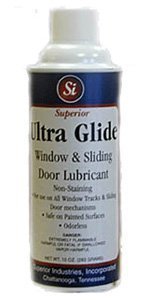
Choosing the right lubricant can make a world of difference. It’s not just about keeping things moving; the right product can extend the life of your door system and prevent more costly repairs down the road. With so many options available, how do you know which is best? Let’s dive into the world of lubricants for sliding barn door tracks and find the perfect fit for your setup.
Why Lubrication Matters for Sliding Barn Doors
You might wonder why lubrication is crucial for sliding barn doors. Without it, the tracks can become gritty and eventually wear out. Picture driving without oil in your car—eventually, it won’t function at all. The same principle applies to your barn doors. Lubrication reduces friction, allowing the door to glide smoothly while preventing wear and tear.
Another reason lubrication is essential is noise reduction. A well-lubricated door operates like a whisper, while an unlubricated door can squeak and groan, disrupting your peaceful environment. Additionally, proper lubrication helps prevent rust and corrosion, especially if your hardware is exposed to moisture.
Lastly, regularly applying lubricant can save you time and money. It’s much easier to spray on a little grease than to deal with the headache of repairing or replacing a malfunctioning door.
Types of Lubricants for Sliding Barn Doors
When it comes to lubricating sliding barn door tracks, not all lubricants are created equal. Here are some of the most common types you’ll encounter:
- Silicone Spray: This is a favorite for many homeowners. Silicone spray is easy to apply, non-staining, and forms a protective barrier against moisture. It also doesn’t attract dust, making it a clean choice.
- WD-40: While not a traditional lubricant, WD-40 can be useful for loosening rusted components before applying a lubricant. However, it’s not a long-term solution for sliding tracks as it can attract dirt over time.
- Grease: Heavy-duty grease is ideal for areas that need a longer-lasting solution. It can withstand high pressure and is perfect for the hinges and rollers of your barn door.
- Dry Lubricants: These contain substances like graphite or Teflon. They’re great for environments where dust and dirt are a concern, as they won’t attract debris.
Choosing the right type depends on your specific needs and environmental conditions. When in doubt, silicone spray is often a safe bet for general use.
How to Apply Lubricant to Your Sliding Barn Door Tracks
Applying lubricant may seem straightforward, but there’s a technique to get the best results. Here’s a simple step-by-step guide:
1. Clean the Tracks: Before applying any lubricant, make sure to clean the tracks thoroughly. Use a damp cloth to wipe away dust, dirt, and any old lubricant. This ensures the new product can adhere properly and work effectively.
2. Choose Your Lubricant: Decide on the type of lubricant you want to use. For most doors, a silicone spray or dry lubricant is ideal.
3. Apply Evenly: Spray or apply the lubricant evenly along the track. If using grease, a small amount on your finger or a clean cloth will work best. Aim for a thin layer to avoid excess buildup.
4. Test the Door: After applying, slide the door open and closed a few times. This helps distribute the lubricant and check for smoothness. If you hear any noise or feel resistance, you might need to apply more.
5. Regular Maintenance: Remember to check your tracks every few months and reapply as necessary. Keeping a routine will help maintain your sliding barn door’s performance.
Common Mistakes to Avoid
Even with the best intentions, you might make a few missteps while lubricating your sliding barn door tracks. Here are some mistakes to avoid:
- Overapplication: It’s tempting to drench the tracks in lubricant, but too much can lead to buildup that attracts dirt and debris. A small amount goes a long way.
- Using the Wrong Type: Not all lubricants are suitable for every situation. For example, using WD-40 instead of grease may provide only temporary relief.
- Neglecting to Clean: Skipping the cleaning step before applying lubricant can trap dirt and dust, making the situation worse.
- Ignoring Squeaks: If your door starts to squeak again soon after lubrication, it could indicate a more significant problem. Don’t ignore these signs!
Avoiding these mistakes will help ensure your sliding barn door continues to function smoothly and quietly.
Recommended Products for Sliding Barn Door Lubrication
Not sure where to start when it comes to choosing a product? Here are a few well-reviewed lubricants that users have found effective:
- 3-IN-ONE Oil: This versatile lubricant is great for various household uses and works well on barn door tracks.
- Dust-Off Dry Silicone Lubricant: Perfect for keeping things clean, this spray goes on easy and repels dirt.
- DuPont Teflon Silicone Lubricant: Known for its long-lasting performance, it creates a strong barrier against moisture.
- Super Lube Grease: If you prefer grease, this is a trusted option that provides excellent protection.
These products not only make your door slide better but also help protect your investment in the long run.
Final Thoughts
Taking care of your sliding barn door tracks doesn’t have to be a chore. With the right lubricant, you’ll keep your door gliding smoothly while enhancing its lifespan. Think of lubrication as a spa day for your door—it keeps everything relaxed and functioning properly.
So, whether you’re dealing with a brand-new installation or maintaining an aging door, a little lubrication goes a long way. Make it a part of your home maintenance routine, and your sliding barn door will thank you with years of seamless operation. Happy sliding!